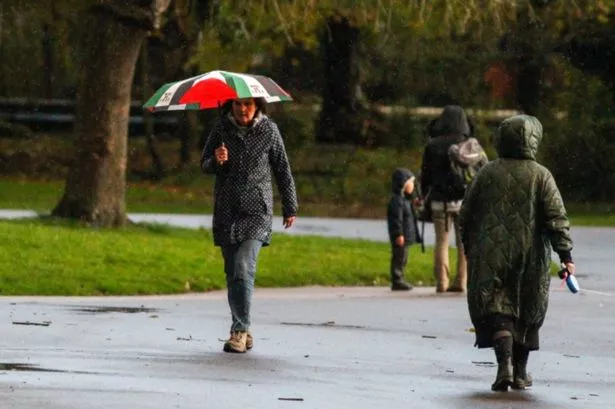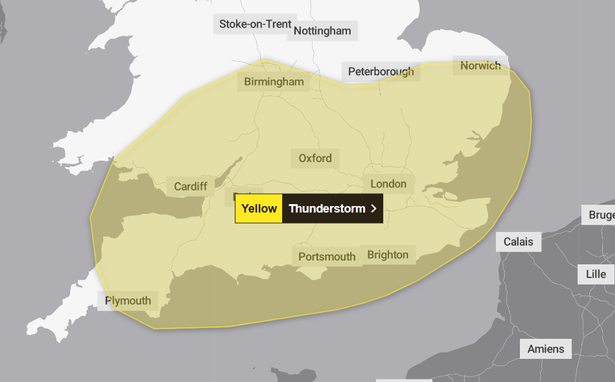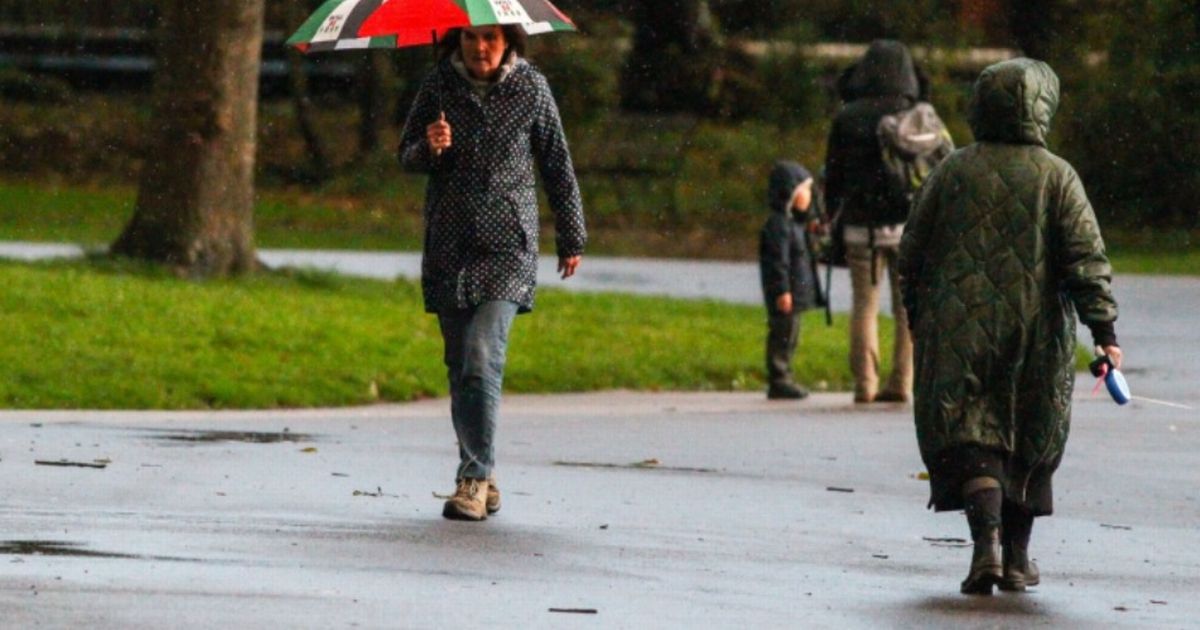The Met Office has issued a Yellow thunderstorm warning for the region with the possibility of up to 15mm of rain falling in less than an hour The Met Office has issued a Yellow thunderstorm warning for the region
The Met Office has issued a Yellow thunderstorm warning for the region
The Met Office has issued a nine-hour thunderstorm warning for the West Midlands and large parts of England.
The Yellow alert will be in place from 9am until 6pm tomorrow, June 7.
It will encompass the entirety of the West Midlands and stretch up into Cannock Chase in Staffordshire while also taking in parts of Shropshire including Bridgnorth and Ludlow.
READ MORE: All the parts of England set to roast in mini heatwave as temperatures reach 30C
Get breaking news on BirminghamLive WhatsApp, click the link to join
The yellow warning will stretch across the Midlands into East Anglia and cover all of the South East of England and large parts of the South West including Devon but not Cornwall.
The warning zone also covers areas of southern Wales too including Swansea and Cardiff.
 The thunder alert area for England and Wales, including the West Midlands(Image: Met Office)
The thunder alert area for England and Wales, including the West Midlands(Image: Met Office)
The Met Office predicts that between 10mm to 15mm of rain could fall in less than an hour, while some areas could experience 30mm to 40mm of rain over several hours from successive showers and thunderstorms.
The forecaster has warned there is a “good chance” driving conditions will be affected with spray and standing water leading to longer journey times.
There’s also the possibility of lightning strikes damaging buildings, power cuts and train services facing disruption.
A spokesperson for the Met Office said: “Heavy showers and thunderstorms may lead to some disruption to transport and infrastructure.
“Frequent heavy showers and thunderstorms are expected for much of Saturday before fading from the west during the mid to late afternoon.”10-15 mm of rain could fall in less than an hour, whilst some places could see 30-40 mm of rain over several hours from successive showers and thunderstorms.
“Frequent lightning, hail and strong, gusty winds will be additional hazards.”
